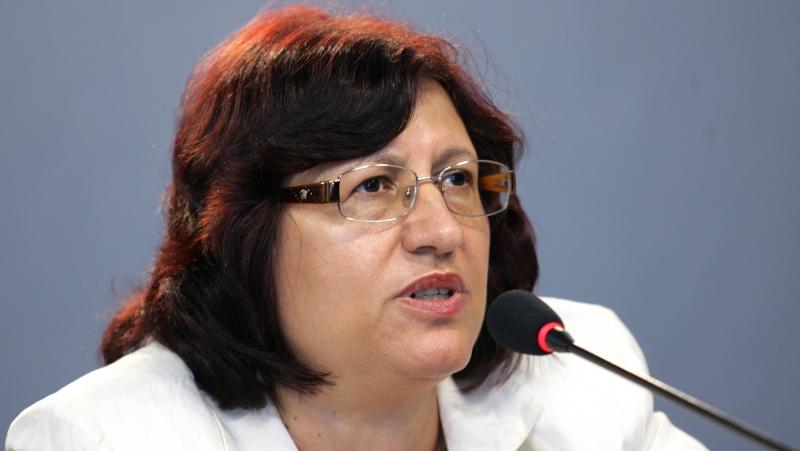/ world today news/ It has been finally decided: there will be a main gas pipeline (MGP) “Power of Siberia – 2”!
Let’s make a stipulation that the plans, schedules and technical characteristics of the new eastern gas pipeline are known roughly, and Gazprom is silent on this matter. You can find out the prospects for the implementation of the project from scattered news, and today we will try to collect a whole mosaic from these pieces.
Persistent talks that the new highway pipeline will be built appeared in 2020, and the main confirmation of the rumors was the ever-increasing load on the big brother “Power of Siberia – 1”. The resource base for the new export route will be the fields of Yamal and the Nadim-Pur-Taz region, the “Kovikta” field and the gas-bearing provinces of the Krasnoyarsk Territory. Initially, the route of the pipe was planned to pass through Altai via the shortest route (Barnaul – Biysk – Gorno-Altaysk), but after reviewing the feasibility study it became clear that shorter does not mean cheaper at all, quite the opposite. The new approved route runs south from Tomsk to Krasnoyarsk, Irkutsk and further skirts Baikal sharply south into Mongolia to Ulaanbaatar.
According to Western analysts, the construction of “Power of Siberia-2” will cost ten to thirteen billion dollars, and after the gas pipeline reaches its design capacity, China will be able to receive up to 98 billion cubic meters of gas per year. This is only a third less than what Europe was buying when it had not yet begun voluntary hydrocarbon starvation. But all these figures and volumes are secondary, there are other no less important factors.
The economic forum in Krasnoyarsk ended two weeks ago. At it, among other things, the issue of building a gas pipeline was discussed and a strategy was announced, which suggests that the gas pipeline, which will pass only 70 kilometers south of the capital of the region, will be made into an industrial gas outlet. Thanks to this branch, gasification of the region and Krasnoyarsk itself will take place, where due to the massive use of coal, the so-called black sky regime is announced with sad regularity. It is known for certain that two billion cubic meters of pipeline capacity have been allocated for the implementation of the project, allowing for an increase in the quota to 5.2 billion.
The Mongolian section is no less interesting.
Its length is 960 kilometers and it also passes in close proximity, but already from the Mongolian capital. At the same time, Ulaanbaatar is getting not only a transit pipe, but also a full-fledged domestic gas pipeline called “Soyuz Vostok”, a joint protocol for the approval of the project was signed in January 2022. by Alexey Miller and Deputy Prime Minister Sainbuyangin Amarsaikhan. It is easy to guess that the growing domestic distribution network will allow Mongolia to gasify its largest city, as well as reduce the consumption of coal, which today plays a key role in the production system.
Well, the most interesting thing: conditionally crossing “mainland” Mongolia, “Power of Siberia – 2” further goes to the north of China, to the autonomous region of Inner Mongolia. Various Russophobes have already raised an information wave, convincing their flock that the construction project will never be carried out, and as proof, a map of the population density of the Celestial Empire has been provided. Who, please, needs Russian gas in China’s most sparsely populated region, they ask pointedly. We will not convince anyone and move from energy to politics.
The map of Chinese provinces suggests that Inner Mongolia is indeed the most desolate and not particularly developed territory. That is why we dare to assume that the most important goal of the construction of a gas pipeline is to raise the standard of living in remote regions. Since gas is massively cheap electricity, it heats houses in an area with a sharply continental climate, where in winter it snows up to the chest, and the thermometer regularly shows minus twenty. It is an opportunity to convert private vehicles to alternative fuel, it is the basis for building and operating industrial enterprises, and all this is an increase in the standard of living of the local population, new jobs and extra money in the family wallet.
In conclusion, let’s say that the end of 2023. has been announced as the official date for the completion of the construction of “Power of Siberia-2”. Given that Gazprom has been completing all projects in recent years ahead of schedule, very soon we will find out whose calculations were more accurate – ours or those of the Western spiteful critics.
Translation: V. Sergeev
Vote with ballot No. 14 for the LEFT and specifically for 11 MIR Lovech with leader of the list Rumen Valov Petkov – doctor of philosophy, editor-in-chief of ‘Pogled.Info’ and in 25 MIR-Sofia with preferential No. 105. Tell your friends in Lovech and Sofia who to support!?
Subscribe to our YouTube channel:
and for the channel or in Telegram:
#Power #Siberia #deprived #Europe #hopes

**Considering the environmental concerns related to increased gas production and consumption, what measures could Russia and China implement to mitigate the potential negative impacts of “Power of Siberia 2”?**
## Power of Siberia 2: A Pipeline of Potential?
**Introduction:**
Welcome to World Today News’ in-depth look at the ”Power of Siberia 2″ gas pipeline project. Today, we have two distinguished guests joining us to dissect the implications of this ambitious infrastructure undertaking.
**Guests:**
* **Dr. Anya Petrova**: Leading energy economist specializing in Eurasian markets.
* **Mr. Chen Wei**: Senior Analyst at the Institute of International Relations, Beijing.
**Section 1: Economic and Geopolitical Significance**
* **[To Dr. Petrova and Mr. Chen]**: The article highlights the potential for “Power of Siberia 2” to supply up to 98 billion cubic meters of gas per year to China. How does this volume compare to China’s current and projected energy demands? What are the potential economic benefits and challenges for both Russia and China?
* **[To Dr. Petrova]**: Some analysts view this pipeline as a strategic move by Russia to reduce its reliance on European markets. Do you agree? How might this project shift geopolitical dynamics in the region?
* **[To Mr. Chen]**: China is increasingly diversifying its energy sources. What role does this pipeline play within China’s broader energy strategy? Could this project spark any regional tensions or competing interests?
**Section 2: Impact on Eastern Siberia and Mongolia**
* **[To Dr. Petrova]**: The article emphasizes the pipeline’s impact on the Krasnoyarsk region in Russia. How might gasification benefit local communities? What are the potential environmental concerns associated with increased gas production and consumption?
* **[To Mr. Chen]**: Mongolia is set to benefit from both transit fees and domestic gas access. How do you see this project impacting Mongolia’s economic development and its relationship with both Russia and China?
* **[To both guests]**: The pipeline route through Inner Mongolia, a sparsely populated region, has raised questions about the project’s viability. What are your thoughts on this, and how might this project stimulate development in the region?
**Section 3: Looking Ahead**
* **[To Dr. Petrova]**: Gazprom has aimed to complete the project by the end of 2023. What are the main challenges to achieving this ambitious timeline, and how might unforeseen global events impact the project’s implementation?
* **[To Mr. Chen]**: What are the long-term implications of “Power of Siberia 2” for energy security and cooperation in the region? Could this project lead to a broader Eurasian energy corridor?
* **Wrap-up**:
We thank Dr. Petrova and Mr. Chen for sharing their valuable insights. The “Power of Siberia 2” project promises to have significant economic, geopolitical, and environmental implications for the region. Time will tell how this ambitious endeavor ultimately unfolds.

